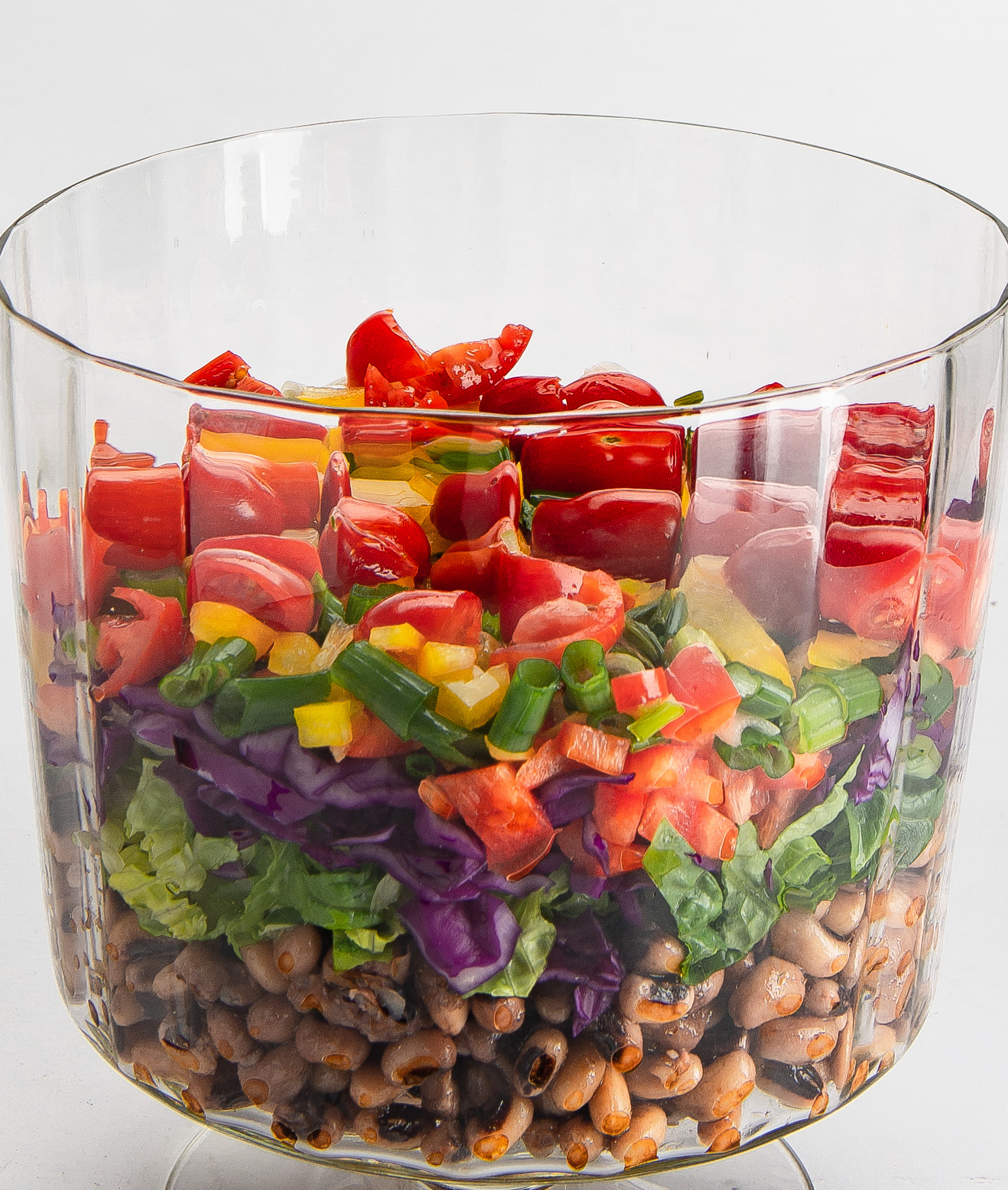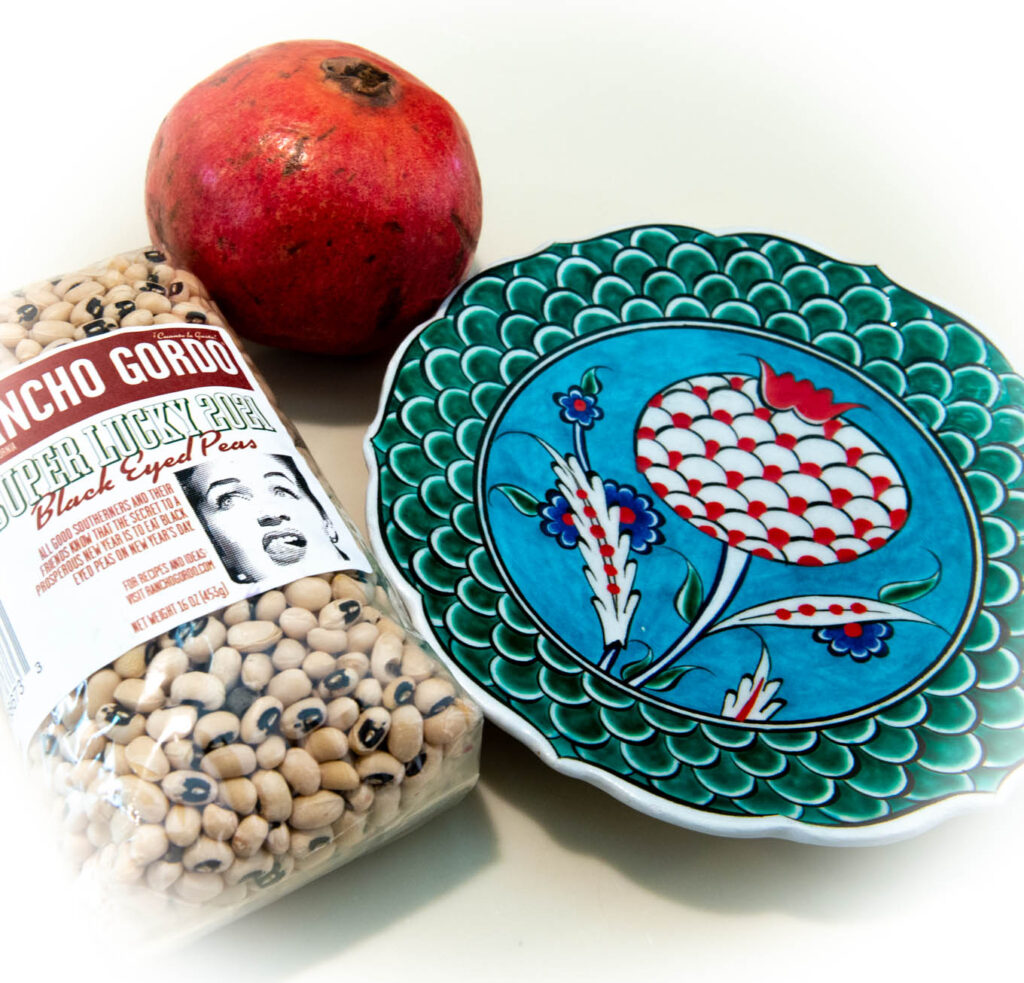As the old Southern New Year’s saying goes, “Peas for pennies, greens for dollars, cornbread for gold.” In other words, these foods, when eaten on New Year’s Day, promise prosperity.
My mother was in the black-eyed-pea school of Southern New Year’s cooks. I always wondered who made up that rule. Here’s the answer: According to the Real Simple site: “One theory anchors the tradition in the Civil War, when Union soldiers raided the Confederate army’s food supply, leaving behind only this bean. Another theory is anchored in African American history, where newly-freed enslaved people celebrated the January 1863 Emancipation Proclamation with dishes made of black-eyed peas—one of the few foods available to enslaved people. But other theories date the legume’s lucky reputation back to Ancient Egypt, suggesting that eating the pea—a vegetable readily available to even the poorest enslaved people—was a way to show humility to the gods.”
We Americans aren’t alone in celebrating New Year’s food traditions. There are all sorts of interesting New Year food traditions practiced across the world.
The Japanese, for example, eat soba noodles– equating the length of the noodle with the promise of a long life. (Heaven help the unlucky eater who chews or breaks the noodles, though! Bad luck for him.)
In Spain, the New Year’s food tradition is to consume a grape as the clock strikes each hour at midnight. Any bitter grapes portend bad luck during the corresponding month on the calendar. Yikes!
Leave it to the Greeks to have the most colorful (literally!) New Year’s Day tradition– smashing a pomegranate against the door at midnight. The number of seeds that fall out of the juicy red fruit indicates the amount of good luck ahead in the new year. (I’m going to try that one the next time I find myself standing on my Greek friend’s front porch. Look out, Michelle; things could get messy.)
This recipe is for a layered Black-Eyed Pea salad. It is versatile because you can pretty much use what you have in your refrigerator to build the salad. It’s beautiful on your table, too–definitely one of those “eat the rainbow” dishes. I used a simple balsamic salad dressing and then adjusted the sweetness of the salad by adding additional sugar to my taste.
Happy New Year from those of us here at Blue Cayenne. Best wishes for lots of good luck and good food in the new year.
New Year Black Eyed Pea Salad
Ingredients
- For the Salad:
- 1 can of black eyed peas or equivalent freshly cooked (drained and rinsed)
- Green onion (chopped)
- 1 red Bell Pepper (diced)
- 1 yellow Bell Pepper (diced)
- Thinly sliced red cabbage
- 1 cucumber (diced)
- chopped small tomatoes
- shredded romaine
- For Balsamic Dressing
- 3/4 C. extra-virgin olive oil
- 1/4 C. balsamic vinegar
- 2-3 T. honey
- 2 garlic cloves (chopped)
- 1/2 t. salt
- 1/2 t. pepper
- Sugar (to your taste)
Directions
- Step 1 To make the salad, prepare the black-eyed peas by marinating them in some of the balsamic dressing.
- Step 2 Prepare whatever vegetables you have on hand. Try to use a variety of colorful and crisp vegetables.
- Step 3 To make the dressing, mix all of the ingredients together and shake to emulsify.
- Step 4 Add additional sugar to your taste.
- Step 5 Drizzle the dressing over the layered salad, toss and serve.


